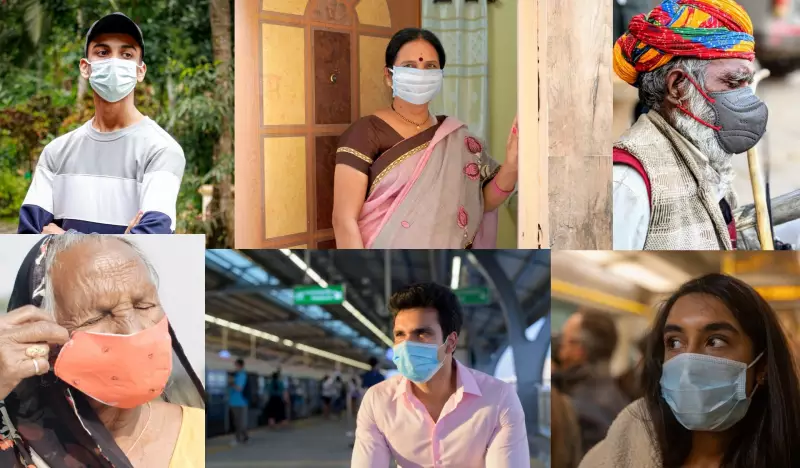
What begins as a persistent cough and fever can quickly unravel into a life-altering diagnosis of pulmonary tuberculosis, a disease many mistakenly believe belongs to the Victorian era. In modern India, this highly contagious bacterial infection continues to affect thousands, revealing gaps in healthcare awareness and challenging patients with both physical symptoms and social stigma.
The Shocking Diagnosis That Changes Everything
One patient recalls the night that marked the beginning of their tuberculosis journey. "I partied at the top of my lungs one evening, and the next day I could barely move," they remember. The initial symptoms—high-grade fever, sore throat, and relentless cough—were dismissed as common illness. Despite following medical advice, taking distasteful medicines, nebulizing three times daily, and surviving on bland foods like daliya and khichdi, the fever persisted relentlessly.
The turning point came during a desperate 3 AM phone call to their mother, when they couldn't even pick up medication lying beside their bed. After weeks of suffering and inconclusive bloodwork showing only mild lung infection on X-ray, a referral to a government hospital brought the shocking question: "Nobody tested you for TB yet?"
Dr Sagar Srivastava, a pulmonologist at Kailash Hospital, confirms this pattern of denial is common. "Whenever I tell patients that the infection could be TB, their first reaction is denial—until I show them the reports," he states.
Why Tuberculosis Often Goes Undetected
The diagnostic challenges of pulmonary tuberculosis create dangerous delays in treatment. Sandeep Singh, a Delhi-based businessman, experienced this firsthand when he suddenly coughed up blood. "I thought I was dying," he recalls. Initial antibiotics provided temporary relief, and blood tests appeared normal, but sharp chest pain eventually led him to AIIMS.
Sunita Goyal faced similar diagnostic hurdles while seeking treatment for her 62-year-old husband at Delhi's Dr. Hedgewar Arogya Sansthan. "He had lung pain but normal blood tests, X-rays, and even three negative sputum tests," she explains. Only when breathing issues and fatigue increased did they visit Patel Chest Institute for advanced testing.
Dr Kashmira Jhala, Consultant Pulmonologist at Apollo Hospitals, Ahmedabad, clarifies why tuberculosis is often mistaken for pneumonia in early stages. "Pneumonia does not turn into TB—it can simply weaken immunity and unmask a hidden infection," she explains.
The Physical and Emotional Toll of Treatment
The journey through tuberculosis treatment brings significant physical changes and emotional challenges. Weight loss becomes a visible symptom, sometimes misinterpreted by society as a positive "fitness transformation" while patients struggle to maintain basic bodily functions.
Arachika Kapoor, a Delhi-based media professional, describes the severity of her infection: "My right lung was completely affected." While doctors suggested surgical intervention to drain liquid, she opted for medication that brought its own side effects—nausea, rashes, and facial swelling.
Dr Sunil Kumar K, lead consultant for interventional pulmonology at Aster CMI Hospital, Bengaluru, emphasizes the critical importance of treatment adherence. "Treatment for TB usually involves taking a combination of antibiotics for six to nine months. Patients must follow the full course to prevent drug resistance."
The medications themselves present challenges. Patients report nausea after morning doses, and Singh notes that "the medicines are so strong that even urine turns brown or reddish."
Government Intervention and the Nikshay System
Recognizing India's high tuberculosis burden, the government has implemented the National TB Elimination Programme (NTEP) with an ambitious goal to eradicate the disease by 2025. This program provides free treatment, digital tracking, and community support through the Nikshay system.
Every diagnosed patient receives a unique Nikshay ID that tracks their progress across healthcare facilities. The system includes follow-up mechanisms where authorities contact patients who miss doses, ensuring treatment continuity.
Directly Observed Treatment (DOT) centers require patients to take medication in front of healthcare staff. "You cannot leave the centre until you take your dose in front of the staff," recalls Singh about his experience at the AIIMS DOT Centre.
Financial and nutritional support comes through the Nikshay Poshan Yojana, providing patients with monthly allowances of ₹500–1,000 and sometimes nutrition kits containing peanuts, rice, oil, and pulses. This government support becomes crucial for families facing financial hardship due to the disease.
Life After Tuberculosis: Mixed Recoveries
The aftermath of tuberculosis varies significantly among survivors. Some patients resume normal life with minimal after-effects, while others face lasting challenges.
One patient shares that they sometimes forget they had TB, though fatigue persisted for months post-treatment, followed by increased appetite and weight gain. Singh reports normal functioning despite a permanent patch visible on his lung X-ray that doctors confirmed as harmless.
Kapoor, however, experiences lasting effects. "I used to walk and run easily, but now I get tired quickly. I also catch colds far more often," she says.
Dr Sagar notes that recovery patterns vary, with some patients requiring appetite stimulants during treatment. The physical scars of tuberculosis may fade for some, but the memory of the fight remains, bringing not just restored health but valuable perspective on life and resilience.





